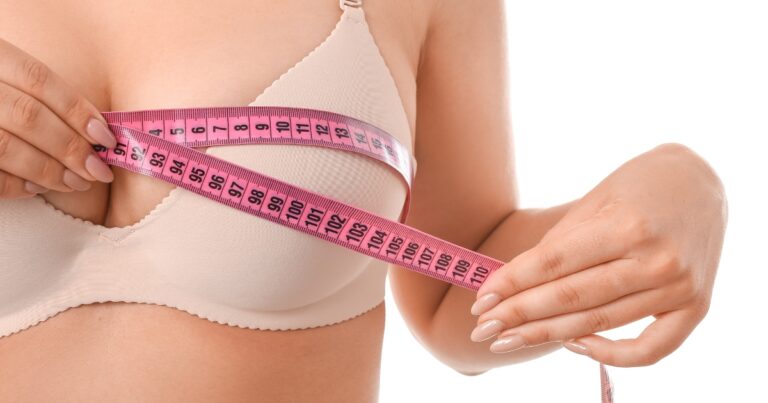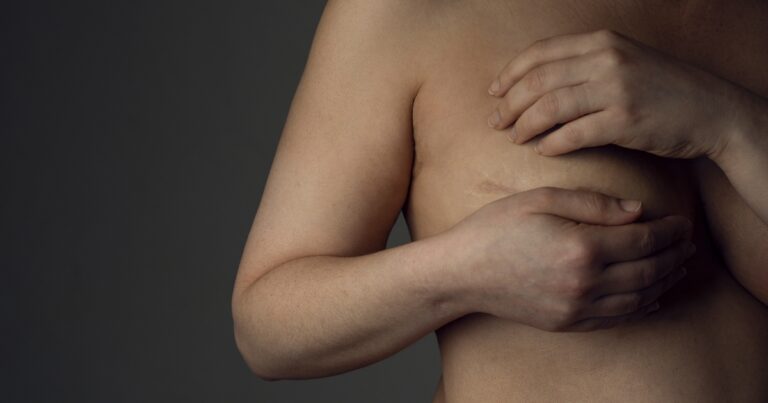Breast reduction surgery (reduction mammaplasty) can be impactful on a woman’s ability to breastfeed after surgery successfully. As a woman contemplates this procedure, she often has questions and concerns regarding the potential effects on lactation and nursing their infant. This article explores Does Breast Reduction Affect Breastfeeding, the breast’s anatomy, and overall ability or success at breastfeeding.
What Happens During a Breast Reduction?
A breast reduction, clinically known as reduction mammaplasty, removes excess fat, glandular tissue, and skin from the breasts to improve their size, shape, and lift. It also helps alleviate the discomfort many women experience from oversized breasts. During this procedure, the nipple and areola are repositioned and remain attached to functioning milk ducts and nerves.
However, due to the breasts’ rearrangement and overall smaller size with less glandular tissue, the ability to produce milk can become impaired. A woman considering this surgery who thinks she may want to breastfeed in the future should discuss lactation considerations thoroughly with her plastic surgeon beforehand.
Does Breast Reduction Impact Future Milk Production?
The amount of glandular tissue remaining after a reduction in mammoplasty surgery directly relates to an individual’s ability to produce milk. Thus, the more breast tissue removed, the less ability a woman may have to lactate sufficiently for breastfeeding.
Book A Consultation With Dr Tarek Bayazid
Top-rated Plastic Surgeon For Breast Reduction in Dubai
Installment Plan Available
Additionally, surgical techniques that disrupt or damage the breasts’ milk ducts, which carry milk through the breast tissue to the nipple, can negatively impact milk transportation.
| Procedure Details | Impact on Breastfeeding? |
| The nipple is completely intact | Less impact |
| Significant breast tissue removal | Higher risk of issues |
| Milk ducts disrupted | Can cause transportation problems |
During a standard breast reduction, the nipple’s position moves higher on the breast mound. As a result, the remaining breast tissue and nipple position themselves over areas with fewer or completely severed milk ducts. This anatomical alteration also makes adequate milk transportation more difficult.
Can I Still Breastfeed After a Reduction Mammaplasty?
Many women successfully breastfeed after breast reduction surgery. However, their ability ranges widely and depends on:
- Surgical technique used
- Amount of tissue removed
- Eventual nipple placement
- The skill of the plastic surgeon
Women wanting to breastfeed after this procedure should clarify their wishes with their plastic surgeon beforehand. This allows surgical planning to preserve nipple sensation, milk duct functionality, and adequate milk-producing glandular tissue.
| Breastfeeding Success Factors | Details |
| Surgical technique | Preserving ducts & glands |
| Tissue removal amount | Less removal = better chance |
| New nipple placement | Over functioning ducts |
| Surgeon skill level | Experience matters greatly |
Which Breast Reduction Techniques Are Best for Breastfeeding?
Today’s standard breast reduction technique, including nipple grafting and significant tissue removal, makes breastfeeding difficult to near impossible for many women.
However, modified surgical approaches focusing on breastfeeding capability preservation provide women with better odds of successfully nursing their infants after surgery. Two of the best breast reduction techniques supporting lactation are:
1. Vertical Mammaplasty
This surgery removes minimal necessary tissue through a vertically oriented incision extending from the areola border. By preserving milk ducts near the nipple and limiting gland removal, many more women breastfeed successfully after this breast reduction technique.
2. Inferior Pedicle Reduction
This method leaves a large portion of breast tissue and milk ducts attached under the nipple. This pedicled design better maintains the nerve and blood supply to the nipple-areola complex, improving breastfeeding functionality.
While not always providing as much reduction and lift effect, these and similar techniques allow interested mothers-to-be the future possibility of breastfeeding after surgery.
| Best Techniques for Breastfeeding | Details |
| Vertical mammaplasty | Leaves milk ducts intact. |
| Inferior pedicle reduction | Preserves nerves & blood flow |
Does Breast Reduction Surgery Always Affect Breastfeeding?
The impact of breast reduction surgery on breastfeeding depends significantly on factors like
- Surgical techniques utilised
- Amount of breast tissue removed,
- Remaining innervation (nerves),
- Blood supply preservation,
- Experience level of the plastic surgeon
When properly executed by a skilled surgeon focused on breastfeeding preservation, women can often fully breastfeed after this procedure. However, risks do exist of impairment, which increases along with more extensive reductions.
Because breast reduction techniques and surgeons themselves vary so much, particularly regarding breastfeeding considerations, blanket predictions about breastfeeding likelihood after this surgery remain difficult. However, reviewing the above factors can help guide reasonable expectations.
What About Breast Augmentation and Breastfeeding?
In contrast to reducing mammaplasty, standard breast augmentation procedures rarely impact a woman’s ability to produce milk and breastfeed successfully. This reconstructive surgery utilises silicone or saline breast implants placed under the chest muscle, leaving nearly all breast tissue intact.
Breasts augmented with implants can expand and accommodate milk production and drainage without issues apart from potential discomfort or visible rippling. So, in nearly all cases, previous breast enlargement does not affect lactation or infant feeding success.
How Long Should I Wait After Surgery to Breastfeed?
Most surgeons recommend waiting at least 3 to 6 months after breast reduction surgery before attempting to breastfeed. This duration allows complete healing and helps minimise issues like poor or uneven milk production. The delay also gives the remaining tissue adequate time to expand during milk production.
Attempting to breastfeed too soon after surgery can cause wound breakdown, infections, poor incision healing, mastitis (breast tissue infection), and undesirable breast shape changes. Patience pays off when it comes to protecting surgical results and breastfeeding success.
In summary, when considering Does Breast Reduction Affect Breastfeeding, it’s clear that the procedure may have an impact on breastfeeding capabilities. Individuals need to discuss potential outcomes with their surgeon to make an informed decision that aligns with their future family planning goals.
As you contemplate breast reduction surgery and consider future breastfeeding plans, consult with renowned Dubai plastic surgeon Dr. Tarek Bayazid. He will thoughtfully discuss technique options, preservation of anatomy, and realistic expectations regarding your capability and success at lactating and nursing postoperatively.
With advanced surgical skills and a patient-first approach focused on satisfying outcomes, Dr Tarek helps women achieve their ideal breast reduction results without sacrificing their dreams of someday breastfeeding. Book your consultation today to get started!







